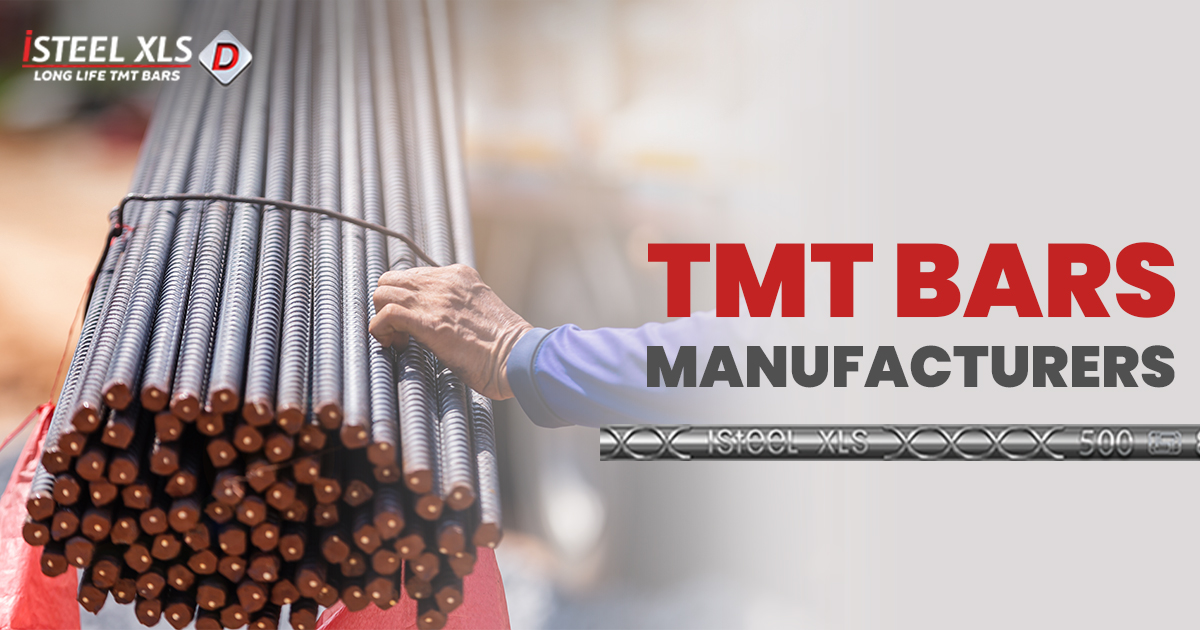Quality Assurance at Every Stage: How TMT Bar Manufacturers Deliver the Best

- By : admin
- 0 Comments
TMT (Thermo-Mechanically Treated) bars are an essential component of construction, used for reinforcing concrete structures. These bars are known for their superior strength, flexibility, and durability, making them ideal for building sturdy structures that can withstand various stresses. The process of manufacturing TMT bars involves several stages, each of which is critical to ensuring the final product meets the highest standards of quality. In this blog, we will explore how TMT Bars Manufacturers ensure top-notch quality at every stage of production.
Understanding TMT Bars and Their Importance
TMT bars are made from high-strength steel, designed to withstand high tension and pressure, making them indispensable in the construction industry. They are used in a variety of applications, including residential buildings, bridges, roads, and other infrastructure projects. The manufacturing process involves various stages, including the raw material selection, the rolling process, and heat treatment, each of which plays a key role in ensuring the quality of the final product.
Key Stages in the TMT Bar Manufacturing Process
1. Raw Material Selection: The quality of TMT bars starts with the selection of raw materials. High-quality iron ore and scrap metal are carefully chosen to ensure the steel’s purity and strength. Reputable TMT Bars Manufacturers work closely with their suppliers to source raw materials that meet stringent quality standards. This is one of the first steps in ensuring that the final TMT bars have the desired properties, including tensile strength, flexibility, and corrosion resistance.
2. Melting and Alloying: Once the raw materials are selected, they are melted in a furnace. This is where alloying elements are added to the molten metal to enhance the properties of the steel. The alloying process is crucial, as it determines the strength, hardness, and corrosion resistance of the TMT bars. TMT bar manufacturers use advanced techniques to control the temperature and composition of the molten steel, ensuring that it meets the required standards for structural applications.
3. Continuous Casting: After melting, the molten steel is cast into billets, which are then further processed. The casting process must be carried out with precision to ensure that the billets are free from defects such as cracks or air pockets. Continuous casting technology is often employed to produce uniform billets with consistent quality. This stage is crucial in ensuring that the TMT bars produced later are free from internal defects that could affect their strength or performance.
4. Rolling Process: The billets are then passed through a series of rollers to shape them into bars of various sizes and thicknesses. This is the point at which the TMT bars begin to take their final form. The rolling process is carefully controlled to ensure that the bars have the correct diameter and smooth surface finish. Precision rolling is essential for ensuring that the bars are of uniform size and free from any surface defects, which could impact their overall performance in construction.
5. Thermo-Mechanical Treatment: The hallmark of TMT bar production is the thermo-mechanical treatment process. This involves heating the rolled bars to a high temperature and then rapidly cooling them using a water spray. The rapid cooling process, known as quenching, results in a hard outer layer while leaving the core of the bar softer and more ductile. This combination of a hard surface and a flexible core gives TMT bars their superior strength and flexibility, making them ideal for use in construction projects that require materials capable of withstanding significant stresses.
During this stage, the bars are also tempered to achieve the desired mechanical properties, including yield strength and tensile strength. The precise control of temperature and cooling rates is crucial to ensuring the bars meet the required standards for construction.
6. Quality Control and Testing: To ensure that the TMT bars meet the required specifications, TMT Bars Manufacturers conduct thorough quality control checks at various stages of production. After the bars are cooled and tempered, they undergo rigorous testing to assess their strength, ductility, and corrosion resistance. Some of the tests performed include:
- Tensile Strength Test: Measures the bar’s ability to resist pulling forces.
- Bending Test: Assesses the flexibility of the bar without causing it to break.
- Impact Test: Tests the bar’s resistance to sudden shocks and forces.
- Corrosion Resistance Test: Checks the bar’s ability to resist rust and corrosion when exposed to moisture or chemicals.
These tests ensure that the TMT bars meet national and international standards, making them suitable for use in high-strength construction projects.
Why Quality Control Matters in TMT Bar Manufacturing
The quality of TMT bars directly impacts the safety and durability of the structures they are used in. Poor-quality bars can lead to structural failures, resulting in expensive repairs or even catastrophic accidents. Therefore, maintaining high-quality standards at every stage of production is essential for ensuring that the TMT bars are safe, reliable, and capable of withstanding the demands of modern construction.
Leading TMT Bars Manufacturers prioritize quality control at every stage, from raw material sourcing to final product testing. By using state-of-the-art technology and adhering to stringent quality standards, these manufacturers produce TMT bars that meet the needs of the construction industry and provide long-lasting value.
Conclusion
TMT Bars Manufacturers ensure the highest quality at every stage of production, from raw material selection to the final product’s delivery. Through a combination of advanced manufacturing techniques, rigorous quality control, and continuous innovation, these manufacturers produce TMT bars that meet the demanding requirements of the construction industry. When selecting TMT bars for your next project, it is important to choose a manufacturer known for its commitment to quality and reliability. By doing so, you can ensure that your construction projects are built with the best materials, offering strength, durability, and safety for years to come.
